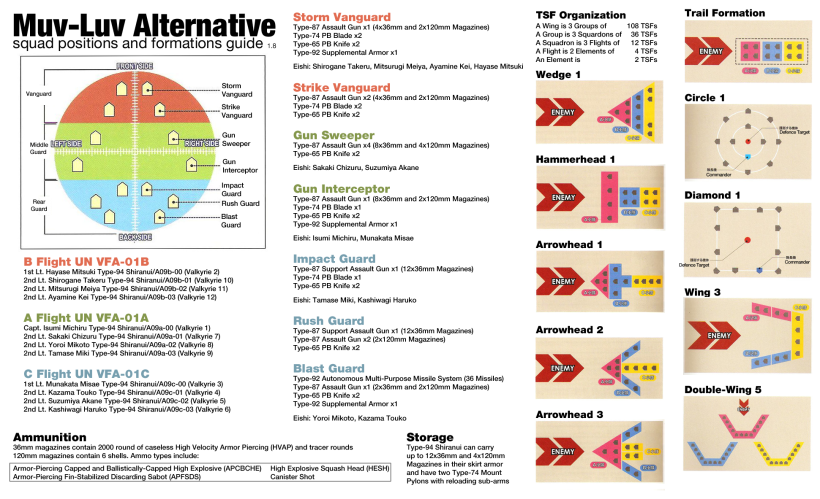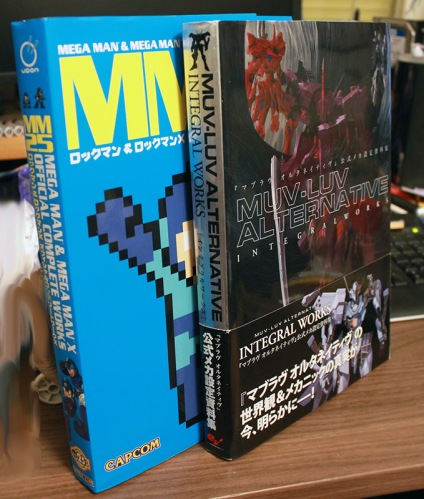I feel this post needs some prefacing. The topic of artificial intelligence is well discussed across all media in all possible forms. The subject’s rather dry if you want to get technical with it, rather than just touch the surface with throwaway philosophical concepts. As a topic it’s part mathematics and part economics, as AI requires both strong scientific and engineering to succeed, but these two require running budgets and political decisions to be feasible. There has been a few AI winters, where the interest had become extremely low due to lack of progress. In truth, we have multiple functioning AI in our current era, ranging from dedicated chess computers to whatever Google’s cooking up. The AI science fiction often employs and what most people seem to regard as the end-product of AI is a machine intelligence superior to human, a super intelligence. That might be one world, but I’d rather not have the spellcheck to shit on me every time I type it. AI research is still ongoing, though it would seem that most prominent research is directed at tool AI rather than general intelligence. It is hard to predict when superhuman intelligence will come to existence, but depending in what form it’ll be in, it might be the last invention mankind needs to make for obvious reasons.
This post will concentrate on discussing three different AI in Muv-Luv franchise, all three which are distinctly separate from each other. There are more in the background we’re never told about, but clearly exist. I will also go the unconventional route and disregard some of the depictions in the narrative in favour of larger discussion, and touch on this wherever relevant, e.g. how TSF AI autopilot should be more autodrone-like rather than weak AI autopilot it has. To spoil some of the latter discussion, how AI is treated in the setting is rather generic and follows SF conventions very closely to the point of not really adding anything new to it. At the same time, how AI is presented in BETAverse setting, a term I use for the world that Unlimited, Alternative and most of the spin-off take place in, is rather unconvincing and even unrealistic on closer look, even when you take into account that the main weapon used again the BETA are giant robots piloted by people in high-tech latex suits. I’m no professional in Artificial Intelligence or the like, so consider this post as musings of a fan.
This post also assumed that you are at least familiar with the overall concepts and world of Muv-Luv, as I will not offer any expanding explanations on topics like Moorcock-Lechte Drive. Sources used for this post are the VNs themselves, as well as The Codex, hence Superordinate replacing the nomenclature for Superior.
Tactical Surface Fighter learning computer, a rudimentary seed AI?
A problem with fiction and AI is that it has coloured the whole concept. The aforementioned chess computer is perfect example of something that was thought to be incredibly hard to attain, simply because it was thought that beating a chess master required to have some sort of nebulous part of humanity with it. When Deep Blue, the successor of Deep Thought chess-computer, beat the chess master Garry Kasparov in 1997, it was deemed a pinnacle of AI, but relatively soon after Deep Blue was considered only a sophisticated piece of hardware dedicated on one task only. It would seem that once intended AI functions as originally intended, the goalpost moves automatically and previous breakthroughs are merely results of clever programming. Kasparov’s loss at the hands of Deep Blue has been downplayed for years, citing Kasparov having unsightly bad play on his part or generally downplaying the value of chess as a game as a measure of human intelligence, something that had been culturally significant part across the globe for at least few centuries already. The same of course can be attributed to the Chinese game of Go, where Google’s AlphaGo beat Lee Sedol, the 18-time world champion, in 2016. Deep Blue was, and still is, a rather weak artificial intelligence, intended for a single task. We’ve yet to achieve any level of general or super intelligence to compare to. However, it would appear that even weak artificial intelligence bests mankind at our own games.
The AI in TSFs is a sort of learning computer, a tool approached weak AI that’s intended to both assist the pilot as well as take take control whenever necessary. Just like Deep Blue, it is not a general intelligence capable of making aware decisions. It is an input/output AI through and though. Pilots are required to train and drill movements and patters to a memory unit within the Fortified Pilot Suit, which this pilot data can be transfers from TSF to TSF with the pilot. This would lead the AI to react to events and situations as indicated by the data, seemingly allowing the TSF to predict the pilot’s actions based on the thought interface based on the changes in the pilots thought pattern and muscle voltage. However, by default this would lead into each pilot data being usable only for certain TSFs with comparable performance and weapon layouts. and mixing data from e.g. F-4 to Phantom to F-16 Fighting Falcon should produce incompatibilities. This would mean the pilots would have to drill new pilot data in the simulators, or at least refine existing pilot data, for newer generation machines rather than directly jumping into them. The pilot data seems to be gathered relatively fast due to the thought control interface the TSFs utilise for faster man-machine interface. It should also be noted that TSF itself accumulates pilot data, meaning a new pilot needs to override the machine’s existing patterns with his own, or is newly rolled out, the pilot will have hard time piloting the TSF due to the AI expecting different input. This canon system is somewhat backwards, as it would make more sense for TSFs have a standard base AI, to which pilot data is applied to as the pilot enters the TSF. This would prevent pilots being tied down to one TSF for effective operation.
In-universe, a TSF at autopilot will have less reaction time and is weaker at close combat manoeuvres than human pilots. This seems to be a schizophrenic hardware limitation. Considering the pilot data is created to assist the pilots in their actions at any given time, from walking to close-quarter combat, the AI of the TSF is required to react to a threat faster than the human pilot in order to assist. If TSF already has the ability to avoid Laser Class’ shots faster than the pilot, then the narrative is faulty at some point. Let us assume that that the AI in the TSF requires input both from the perceived threat and the pilot in order to act, meaning that the pilot data would make the TSF’s actions smoother during the actions themselves. The pilot data then would serve to smooth out TSF motions, but this is largely countered by the fact that TSF base AI requires positional resets and can not accept overlapping commands to for a chain of actions.
It would not be a stretch to assume that despite being able to assist the pilot in some manner through pilot data, it would seem apparent that the TSF’s computational centre is not fast enough to actually use the the data by itself, hence why its autopilot functions are extremely lacking. Despite being able to perceive threats and assist the pilot, whatever CPU equivalent it has seems to be incapable of reacting and making proper decisions based on the taught data. Considering modern TSFs are OBL (Operation By Light) the input the TSF AI gains is effectively immediate. Thus, the bottleneck of the system has to be the CPU, and this is something XM3 can’t affect, meaning XM3’s most notable element isn’t that it uses Shirogane Takeru’s pilot data as its basis or allows chaining inputs, but that it has been optimised to the point of the CPU having enough time to make a decision based on the situation rather than dedicating the pilot to a manoeuvre. This is also why all XM3 equipped TSFs have revamped computing hardware, running parallel-computing computers in order to allow XM3 to function at all. However, if we assume that the CPU bottleneck was the reason why TSF autopilot had lower response time than pilot, the new parallel-computing hardware should also increase the old OS’ functions to a very large degree, allowing autopilot to use pilot data for far faster action. The main core difference between thus ends up being not just the smoother and more action-reinforcing AI, but the sheer hardware advantage parallel-computing has over the old hardware.
Assuming that with the advent of further hardware innovations other than parallel-computing, it should be relatively straightforward to create a drone-like TSF, where its functions are based on existing pilot data and environmental input. Considering the BETA on Earth are stuck on simple action patterns, even after then Alternative‘s events changed them to a degree, it should not be out of question to have these learning computers to learn directly on the field and choose the most proper output in a given situation. This learning would be extremely fast, as XM3 shares data across all the units, meaning all TSFs would share the end results of both successful and failed manoeuvres. This sort of dynamic learning would easily lead into autopilot TSFs easily matching, and then overcoming both their human and BETA opponents. With hundreds of hours logged into pilot data files, a TSF could in principle adopt the pilots manoeuvres and use that as the core base library, be it against BETA or humans. This might end up making the TSFs relatively predictable at first, but as data accumulates, the seed AI should learn to variate or even faint against human opponents.
The core function of TSF OS is effectively that of a seed AI that is being taught how to move and function as dictated by intention as a weak artificial intelligence tool, which in-universe seemed to have hit a stop-gap caused by computational technology hitting a snag. However, pretty much everything else around it is ready for the step to AI driven TSFs, as input/output technology is clearly miles ahead. Artificial muscles and fiber-optics allow at least near light-speed input from environment to be received, but decisions and sending commands back seems to be the issue. This is not the case with artificial limbs in their current iteration. Suzumiya Haruka had some troubles with her pair of limbs, whereas the 00 Unit full-body prosthetic had no obvious problems acting and moving like a natural human being.
Whole Brain Emulation, 00 Unit and super intelligence
Whole Brain Emulation is how the initial 00 Unit is gained its intelligence. The concept is solid; scan a brain from a given moment and use machine to replicate brain’s functions on some level to gain general intelligence. The level the brain must be replicated in order to have it properly function is not known, though in principle it should be enough to replicate the general function of the synapses rather than emulate the brain below cellular level. The advantage of successfully emulating brain functions is that we don’t exactly need to know the deeper functions as long as the brain’s state can be successfully emulated. As long as the emulation is low-level enough, the emulated synapses and other functions should take over by themselves. The hardware doesn’t have a control over them.
Another benefit in this is that the emulated intelligence can be tweaked to function faster, e.g. make the synapses shoot faster. As such, accurate emulation is not the intended end result if the end result is super intelligence, but whole brain emulation can be the first step towards to it. Emulated brains with tweaked functions would be able to think faster and more efficiently than normal brains as well as able to absorb far more information for further use. It is clear that the emulated brain within 00 Unit is not vanilla variety, but has hardware modifications applied. These include a level of ESP and general control over machinery either via ESP or unknown means. Furthermore, 00 Unit’s control and calculation abilities have greatly been boosted over her source brain abilities as per the intended usage as a communicator between the BETA and humanity. As such the Whole Brain Emulation we see in Muv-Luv Alternative and in the assumed future counts as super intelligence. Needless to say, 00 Unit is strong intelligence to TSF’s weak intelligence.
The emulation hardware the 00 Unit has is far superior than what TSFs use for their OS and functions, as if they were similar, it’d mean 00 Unit’s brain emulation would be pathetically slow. This of course is solved by having the solution brought from EXTRAverse, by having fifteen billion semi-conductors working in parallel to create an artificial brain build of material able to super conduct as room temperature called Grey Nine. This artificial brain is effectively a quantum computer in itself, and is able to quantum conduct. Effectively, it is a cross-dimensional quantum computer able to link itself to other worlds where 00 Units exists, effectively creating a pan-dimensional computing network. This is hilariously over the top in terms of processing power and science magic, well within the reach of accurately emulating every and all functions of a brain even at atomic level. The rest of the emulation, in order to cause disassociation with the emulated brain, is the body. 00 Unit is relatively traditional SF cyborg body, emulating all surface functions of a human, from breathing to function of sexual organs. Birth is apparently impossible, but with medical technology being this far, artificial wombs would be in the range of possibility. The egg might need to be donated elsewhere and inserted within the womb either through traditional means or already fertilised. The donor may be some other person, or perhaps the eggs have been harvested and frozen prior brain scanning.
The technology of brain scanning in Muv-Luv is destructive. The principle is that a brain is harvested at some point, probably frozen to some extent and then cut into extremely thin parts slices. These slices are dyed properly to map out each and every cell and their position, which in itself is an incredibly daunting task that required relatively advanced medical and analytical technology to replica in a virtual environment. It is probable that the same hardware that emulates the brain running 00 Unit was also necessary to even begin with the task of analysing the brain and its state. Considering we have the technology that are superior to our own eyes and ears, it would not be impossible to assume that perfect sight and hearing are a package deal here. It would also be completely possible to add strength and speed to the body, but the difference between the emulation’s original body and the artificial one would be more pronounced. Seeing that the emulation is perfect, as in it functions as the driving force rather than as a framework further software is run through, the emulated personality would have a relatively difficult period to accustom to their superhuman body compared if the cybernetic body would be human-like. Further upgrades of course can apply further post-human additions, from multiple arms to completely inhuman body.
Whole Brain Scanning and its successful application in perfect personality replication opens some hard questions. If the personality emulation is perfect, and there is no dissonance between the human and artificial body, can be say that the 00 Unit is simply a machine continuation of the brain donor? After all, the experiences of the donor continue directly where the brain’s functions were stopped. Booting up for the first time might be a similar experience to waking up from a sleep. This can be contrasted to Star Trek‘s teleportation dilemma, which asks if the person who comes out from the porter is the same person who entered it, as Trek‘s technology requires destruction of the original particles in order to record them, and then an assembly of this data at the other end. Effectively, the person needs to die in order to be teleported. Few times in the show’s history old data has been used to reconstruct previous states a ship member had been to reverse some ailments. Additionally, the transporter can remove or add elements from the data. It would not hard to assume that tweaking the data it would be possible to further modify the pattern. Consider also that about every seven years a human has renewed their cell structure, effectively replacing all the old there was. This sort of idea of at what point a ship is a new ship, if all of its parts are replaced one by one in time. At some point, nothing of the old ship exists any more.
In-universe, there are two takes. Kouzuki Yuuko having no connection to the brain donor largely treats the 00 Unit as an intended machine, despite 00 Unit having its own agency and persona. Shirogane Takeru on the other hand takes the approach that as long as the memories and personality are Kagami Sumika’s, the 00 Unit and her are one and the same. The continuation of the personality, the awareness and consciousness, is what defines her as over the fact that she is artificial. It would also seem impossible to replicate Kagami Sumika’s brain pattern to a new body. Despite the fact that her body functions on extraterrestrial G-elements, it should be possible to record her brain pattern off from her body and upload it to a new body. However, the fiction seems to indicate that this is not possible, either due to lack of technology like having multiple hardware builds to house further 00 Units, or that the scanning and pattern upload procedures are simultaneous, effectively hard coding the pattern to the hardware. We can then assume that tampering of the hardware could lead into large damage or total shutdown, or that 00 Unit’s body works similar to some arcade hardware that require constant power to be fed in order to keep the data in memory. We can also assume that the brain emulation is completely dependent on the artificial brain itself, and would require another where to record the pattern to. It might be that in the end there were not enough resources to create another artificial brain at that point in time. All this seems to be driven by the narrative’s need to have drama over that practicality of whole brain emulation.
Considering the momentary existence of the 00 Unit, Japan was the only nation in the world with super intelligence, meaning their edge over other nation in terms of sheer computational power was unmatched. In-fiction, the 00 Unit was capable enough to fool sensory readings of large amount of TSFs all the while controlling the Moorcock-Lechte Drive and its Rutherford Field. If 00 Unit was to used for intelligence gathering from neighbouring nations, or nations with stranglehold on world economics like the US, Japan would have decisive strategical advantage. Instead, 00 Unit was used to spy and map out BETA structures, though for unknown reasons this spy connecting via a BETA Reactor, a Brain Class, was more or less bidirectional.
00 Unit waypoint to TSF machine intelligence?
As mentioned, even if normal human mind can’t create general machine intelligence, Whole Brain Emulated AI would easily have access to the necessary power to solve the equations. In Muv-Luv, 00 Unit’s extremely efficient quantum network would be able to create the necessary theories and solution in order to create general machine intelligence. This could be then applied to each sector that relies on AI support, such as TSFs. While I’ve painted a picture that even in-fiction TSF driven by tool super intelligence is not far, similar stories have been told in our real world. Since the 1940’s the advent of AI has been expected to take place within the next two decades, but it has been moved forwards with each win and failure, as the AI goalpost is being moved each time a successful weak AI has been implemented. Such is the case of Deep Blue.
TSF super intelligence would not need to be general AI. Quite the opposite, despite being super intelligence, it could be created to lack agency of its own. The solution to create new 00 Units exists and is being taken advantage of by 2040’s, meaning that general machine intelligence should be a thing to some extent. If we take this into account, it would be possible to downgrade the artificial brains to only emulate standard human brains without the quantum connection and install these as TSF’s on-board computers. This of course means you’d be giving a giant robot access to its own agency, which might end up badly. To take this even further, perhaps with enough materials and scanned brains it would be possible to excise cockpits as such from TSFs altogether and simply have pilots move have their conscious temporarily moved into the TSF shell. This would be a temporary upload, which would then upload itself back to the pilot body when TSF returns to its hangar. Death of a pilot would only mean that an iteration that was uploaded to the TSF would cease to exist, whilst the originator of that thought pattern would still be safe and could be used for further action. With XM3 sharing data across the TSFs, further developments might even be able to return the uploaded pattern back to the pilot’s body before destruction due to the sheer speed fiber optics allow.
This of course raises numerous ethical and existential questions about treatment of humanity and how we define what is to be human or alive. Though who knows, maybe F-47 Ishkur has some sort of on-board AI assisting the pilot.
The described AI TSF exists within the setting, though in somewhat different from and function. In MLA Total Eclipse, there exists a device that has a shape like a rounded coffin, which houses a live esper. When activated, a red aura emanates from inside of it, and engulfs the TSF in a similar aura. This red aura seems to denote malicious presence, as opposed to the blue aura other espers can envelope TSFs with. This aura is called the Nastroyka Effect, and its overall brightness and effect is linked to the esper’s Prafka, an effect which induces esper with a state that increases their ability to pilot. The П3 Plan, fully titled as Polnoye Zatmeniye Plan or Total Eclipse Plan, aimed to create TSFs driven by these esper pods for more efficient operations. By triggering the Prafka on these pods, each TSF equipped with them would have superior operational efficiency over other TSFs. A human pilot was still necessary to be present for command and control over the overall actions.
Because the esper pods would control the TSF via their psychic linkage, they could be counted as AI driven by biological compuers, the espers themselves. However, whether or not we should count living humans appropriated for such task as AI is an open question. However, it could also be possible that these espers were modified to function only in this manner via brainwashing or other memory alteration techniques, and the rest of their humanity was retarded to non-existence. This would mean they would not function in any other form. Considering the Soviet Union doesn’t think espers as nothing else but dolls to be used and discarded when their usefulness end, it would sound apt they’d remove all the “unnecessary” elements from their autopilots. The ethics of this plan are highly dubious, as birthing and raising humans to function as nothing else but biological AI effectively does seem to break numerous human rights.
Biological super intelligence
The fact that BETA are artificial beings mean their intelligence is also artificial, engineered by their creators to function in intended ways. Due to their alien origin, assuming anything on how BETA AI works can only be surmised from their actions. All the smaller strains, if not all other strains outside the Heavy Brain Class that sits at the core of Original Hive, seem to function on tool general intelligence. No other strain exhibits creative thinking or change in behaviour patterns despite few decades of warring. They are to serve a role in a larger function, and their behaviour is set up by the Superordinate a.k.a the Heavy Brain Class. Considering BETA tactics had no reason the change after the initial aerial barrages up until the first unknown contact with the 00 Unit via a Reactor a.k.a Brain Class. The reason for this is rather obvious, as BETA on Earth are resource collectors, recycling all materials they need for production. They have AI that has agency. It is assumed these refined materials are send to the BETA creator’s home world.
The fact that only Heavy Brain Class BETA can modify the AI of any other BETA, meaning change their original intended function like using the Laser Class as anti-air weaponry, the lower tier BETA follow very strict AI pattern that does not allow them to veer off course. While on the surface this code seems to be relatively simple and strict, BETA have exhibited large range of actions to achieve their goals, like a Tank Class BETA jumping in the air to land on a tank rather than the usual swarming. This sort of leeway allows the BETA to have dynamic actions on the battlefield in their point of view, while in comparison to human battle doctrines they have essentially no deviation. New BETA can only be designed at the Original Hive or in a Hive where a Heavy Brain Class exists, meaning there is a strict and archaic hierarchy within the BETA command structure. The Super Heavy Laser Class seen towards the end of Muv-Luv Alternative Total Eclipse is the most prominent example of Heavy Brain Class creating new Class to fight an opponent, though Soldier Class strain is most likely Earth-exclusive due to its resemblance to the human form.
Considering all this, the BETA are effectively super intelligence side in the war on Earth against them. The sheer raw computational power and ability to create new BETA strains to counter human tactics is even more significant than just their larger numbers. With enough input, the Superordinate would be capable of producing a single strain that would be end of mankind, with or without relative strategies. Of course, because BETA don’t have a tactic, they aren’t war machines after all, such devices would only be utilised at extreme situations. If the Superordinate would assess mankind a life form, and accept that it was with only one side surviving, it would most likely alter its largely inert behaviour and become an active participant.
Calling BETA biological machines would not be all that incorrect, considering the Superordinate requests Shirogane Takeru to reactivate then torso-shredded Tamase Miki. Machines can be re-activated even after some damage, something BETA seem to consider themselves capable of doing, hence they consider themselves as non-lifeforms. This definition carries to humans, as revealed by a psychic contact during Alternative 3 procedures, and can be assumed to extend to all other lifeforms based on carbon. This naturally means that the BETA aren’t exactly hostile from their point of view, but rather carrying out pre-ordered function to gather materials. They are effectively as much as a machine to their creators as cars and trucks are to us.
Ultimately, the fight between humanity and the BETA is effectively a story of humanity fighting AI. Similar how TSFs have a weak tool AI, so have the smaller strains. Similarly, 00 Unit being the humanoid quantum computer in silicon the Superordinate is a biological quantum computer, which probably explains why it has to sit atop a mushroom shaped reactor. However, for all intents and purposes, the BETA AI is somewhat humanised, for the lack of better word. While it seems alien and first, the fact that the whole functions similar to archaic computers. Even with human made general AI, not to mention super intelligence, there should be little reason to assume that it would function similar to human patterns or restricts itself to hardware routes, especially if it has any capabilities of self-enhancement. It is highly possible that the Heavy Brain Class is able to do this, as it was able to comprehend human speech and mind at staggering speed. Despite this, its innate programming may not have allowed it to expand further, unless necessary input was presented. The probability of a human being able to do this are largely nil.
The AI elements in Muv-Luv should be considered as standard SF fare. It is not the main focus or the point of the franchise. Yes, the BETA are effectively AI and cyborgs and what are successors of 00 Unit will appear later in the franchise, if the roadmap indicated by Exogularity Volume 1 is anything to go by. There probably won’t be any sort of fully AI driven TSFs despite the path now being completely open for them, though the BETA AI will probably be touched to some extent depending whether or not the Heartless One is human or BETA agent. While AI is more or less an afterthought, a sidestepped issue in all of the current stories released thus far, the current setup does allow the staff discuss the philosophy and concepts of Artificial Intelligence down the line, especially when the intention is to showcase mankind in a state where it is natural, posthuman and transhuman at the same time.





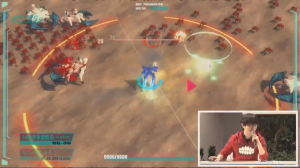
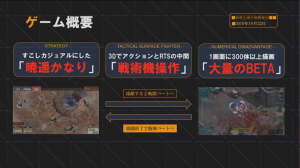

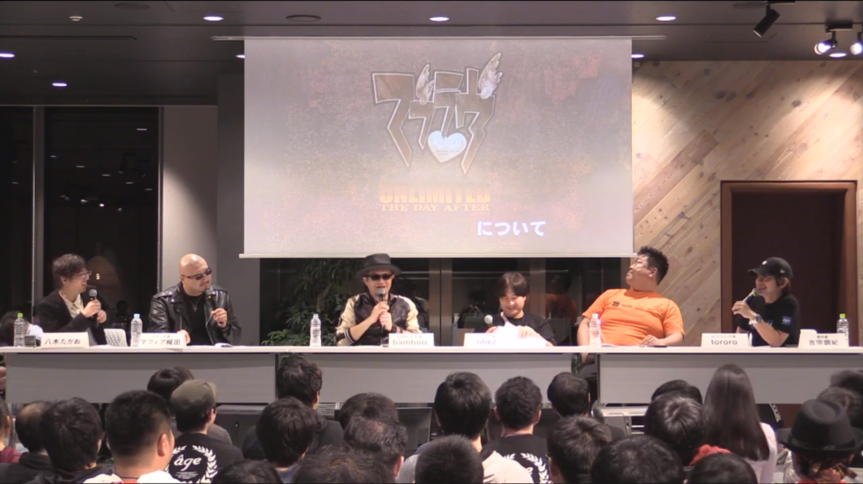



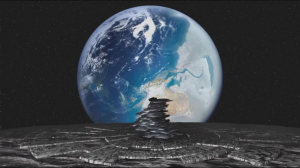
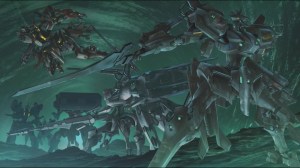




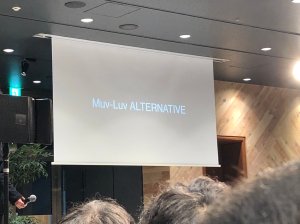
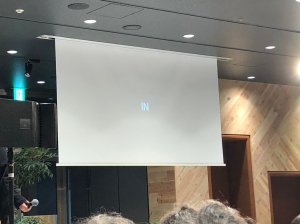


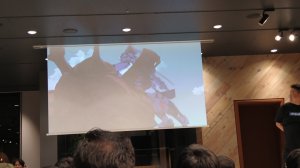
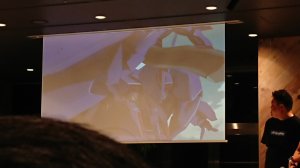
































![maxresdefault[1]](https://aaltomies.files.wordpress.com/2016/06/maxresdefault1.jpg?w=863&h=485)




![FIGURE-002459_04[1]](https://aaltomies.files.wordpress.com/2016/05/figure-002459_041.jpg?w=863)


















